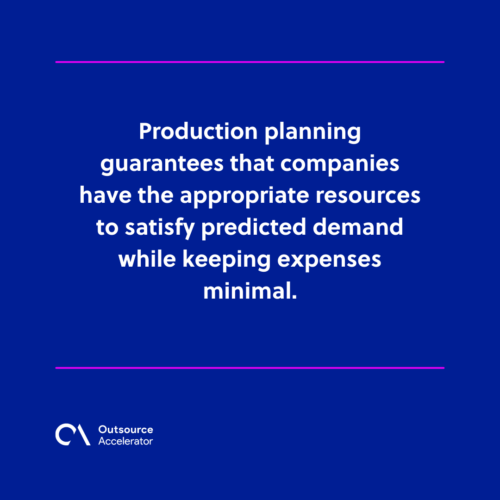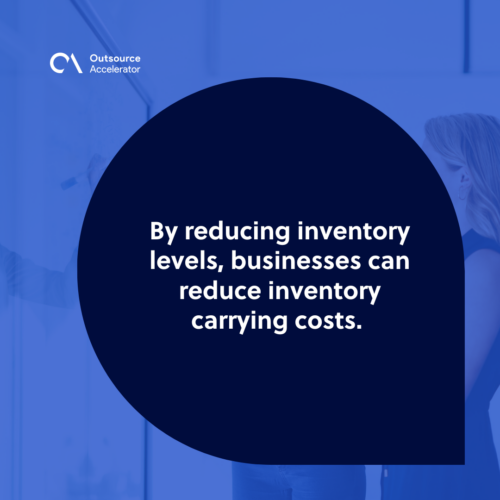Mastering aggregate planning for business success

Certain parts of the business are unpredictable. Natural catastrophes, for example, can derail your company’s production of goods. But a system focused on stability and regularity may help safeguard you from external forces.
Planning is an essential aspect that helps companies achieve their goals. Businesses use many tactics to save money, plan for uncertainties, satisfy consumer expectations, and earn income.
Aggregate planning is one way businesses can adapt production capacity to customer demand. You should learn about this framework if you want to work in the manufacturing business or a similar field.
This involves creating a comprehensive plan for production, inventory, and workforce levels to meet organizational goals.
This article discusses aggregate planning, how to implement it, and the strategies businesses can use for success.
What is aggregate planning?
Aggregate planning is the process of identifying the extent of a company’s production activities. It involves predicting future demand for a firm’s goods or services and preparing the company to meet that demand.
Aggregate planning often analyzes information (to determine how to satisfy customer demand at the lowest possible cost) such as:
- Sales targets
- Current production levels
- Recent inventory record
- Client backlogs
With this knowledge, a company can predict when the demand will peak or fall and guarantee it has enough goods to match the needs of the consumers.

This planning technique enables corporate executives to efficiently coordinate the proper quantity of resources without excess or underproduction.
Rather than simply examining certain areas, like current inventory, aggregate planning obtains a comprehensive picture of what to expect from the production — in the future.
How to implement aggregate planning?
Aggreggate planning should incorporate the following:
Identify the planning horizon
Planning horizon speaks about the time frame in which the overall plan is established. Depending on the firm’s demands, the planning horizon may range from a few months to a year.
For instance, if a company chooses a planning horizon of six months, a comprehensive plan should be taken in place. The following factors should also be considered – seasonal demand, inventory levels, and production capacity into account.
Develop a production plan
When developing aggregate planning, businesses must consider the predicted demand and their production capacity. Production planning guarantees that companies have the appropriate resources to satisfy predicted demand while keeping expenses minimal.

Create an inventory plan
Another important aspect of executing aggregate planning is developing an inventory plan. Lead times, demand unpredictability, and safety stock levels should all be included in the inventory strategy.
Organizations must guarantee an adequate inventory to fulfill predicted demand while keeping inventory carrying costs minimal.
Monitor and adjust the plan
To make sure the aggregate planning is going as planned, it needs to be monitored so any unfavorable results can be changed. It means keeping track of the actual amounts of demand and production and making changes as needed.
For instance, if a business’s production levels are lower than expected, it may need to consider subcontracting or requiring overtime to meet the expected demand.
Aggregate planning strategies
Businesses can use different aggregate planning methods, such as the following:
Production rate changes
Adjust the production rate to match the predicted demand. This aggregate planning technique allows businesses to reduce expenses and increase revenues by altering the manufacturing rate.
For example, if a company anticipates strong demand during the Christmas season, producers might boost the firm’s production rate to satisfy that demand.
Similarly, if the demand is lower than predicted, the company may reduce production rates to avoid overproduction and save money.
Overtime and undertime
This aggregate planning method can assist firms in meeting anticipated demand while lowering expenditures or maximizing profits.
For example, if a company anticipates increased demand during the holiday season, employers may request a worker to work overtime to boost production levels.
On the other hand, if the demand is lower than anticipated, the company can utilize undertime to cut production levels and save expenses.
Keep in mind that an employer and employee should agree upon this aggregate planning method. This ensures that the worker is okay with the terms of overtime and undertime to avoid employee conflicts.
Subcontracting
In this aggregate planning strategy, a company might outsource a portion of the production of goods to other businesses. This can be a perfect solution for when a firm cannot satisfy the anticipated time of fulfilling customers’ demands.
Catalyst BPX presents a compelling solution through its Business Performance Management service. Through meticulous planning and execution, they assist organizations in streamlining operations to achieve sustained success ultimately.
Backordering
Backordering is an aggregate planning strategy that postpones the delivery of some orders to fulfill predicted demand. This method can assist organizations in avoiding overproduction and lowering expenses.
For example, if a company anticipates strong demand over the weekend, it may postpone the delivery of some orders from earlier dates to accommodate the demand. This can assist the company in preventing the overproduction of goods.
Inventory carrying costs
Inventory carrying costs are the expenses incurred from holding inventory. By reducing inventory levels, businesses can reduce inventory carrying costs.
This aggregate planning strategy can assist companies in minimizing expenses and maximizing profits.

Aggregate planning keeps production running efficiently
Aggregate planning is a necessary process that assists firms in developing a strategy for production, inventory, and personnel levels to fulfill predicted demand.
Businesses may achieve long-term goals and remain competitive in the market by mastering aggregate planning. How can you do it? Follow the abovementioned aggregate planning techniques and see the results!







 Independent
Independent




